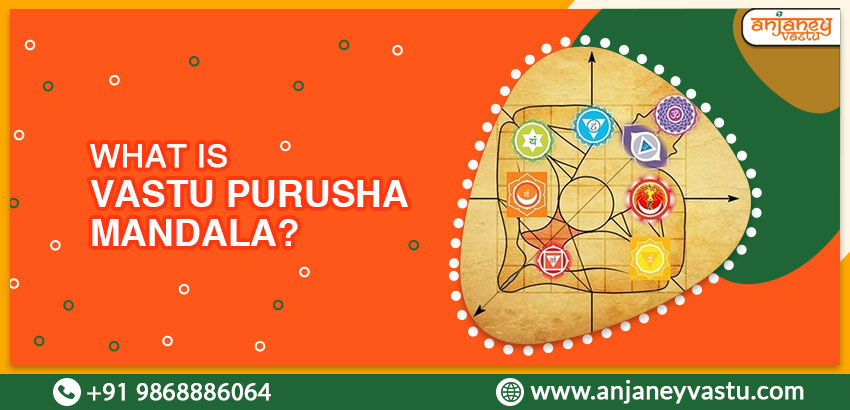The Vastu Purusha Mandala is a fascinating tale from ancient Indian texts that depict the birth of Vastu Purusha, the confusion he created, and how he was defeated by the combined efforts of various Gods. This tale also goes into detail about the Vastu Purusha Mandala on the basis of Vastu Shastra.
The Legend of Vastu Purusha Mandala
According to Hindu mythology, Brahma, the founder of the Universe, played with the existence of a new species in the beginning. He fashioned a massive celestial man, who grew quickly as he began to devour everything in his way to feed his insatiable appetite. When he became so large that his shadow fell on the Earth, causing a permanent eclipse, the gods’ Shiva and Vishnu asked Brahma to intervene before this Creature ruined everything.
Brahma realized his error and referred to the Astha Dikapalakas as the Gods of the eight cardinal directions. They overpowered the creature and kept it flat on the ground. Then Brahma leapt into the middle and grabbed the monster’s neck. The Monster then screamed out, “You made me like this. So, what is the point of punishing me?”
Brahma gave him a solution, making the Creature invincible with the guarantee that any human who built a structure on Earth must worship him. Vastu Purusha was his name. Vastu Shastra lays out the guidelines for constructing structures so that they do not offend the Vastu Purusha. These ideas are demonstrated using a diagram known as the Vastu Purusha Mandala.
The Vastu Purusha Mandala

Source – Astrovish
The Vastu Purusha Mandala diagram above is a metaphysical square plan that depicts how the Vastu Purusha was pinned down by Brahma and 44 Gods – face down, with his head to the North-East and his feet to the South-West.
The diagram is made up of 9×9 = 81 sections. The locations of the 45 gods who are holding down the Vastu Purusha (32 in the external enclosures and 13 in the internal enclosures) are depicted. These abstract Gods have innate virtues and reign over different facets of life.
The role of the rooms in each area of the house was determined by the existence of the god controlling that area. According to Vastu Shastra, if the house is built in accordance with the Vastu Purusha Mandala, an ideally balanced atmosphere is developed, ensuring enhanced health, prosperity, and satisfaction, since the ancient Vaastu pandits discovered that when the different rooms were put in accordance with the Vastu Mandala, good disposition to the Sun, proper ventilation and lighting, and privacy will be assured.
Importance Of Location Of Rooms Based On Direction
Based on the time of day, humans engage in a variety of behaviours. The ancient Vastu pandits split the 24-hour period into eight sections, each representing one of the eight cardinal directions. They built and directed different rooms of a house towards the Eight Cardinal Directions, so that the inmates could receive beneficial rays of the Sun at any time of day, depending on the operation, according to the location of the sun during the day. This is discussed in detail here:
North East
Brahma Muhurta is the time between 3 and 6 a.m., just before sunrise. The Sun is now in the North-Eastern corner of the building. Since it is so quiet and calm, these hours are perfect for Yoga, meditation, or study. As a result, the Puja Room or meditation room should be located in the northeast corner.
East
The Sun is in the eastern portion of the building from 6 a.m. to 9 a.m. This is the time for washing and dressing for the day, so East is a fine place for a bathroom that is only used for bathing.
South East
The perfect time to prepare meals for later in the day is between 9 a.m. and 12 p.m. when the Sun is in the South-East corner of the building. As a result, the kitchen may be situated here.
South
Since it is time to relax after lunch, the period between midday and 3 p.m. is known as Vishranti or the relaxing period. The Sun is now in the south, which is ideal for a bedroom.
South West
Until rest, the hours of 3 p.m. to 6 p.m. are for learning and working, and the Sun is now in the South-West part of the building, which is perfect for a research or library.
West
The hours between 6 p.m. and 9 p.m. are reserved for sleeping, sitting, or reading. The sun rises in the west, making this the ideal position for a dining room or living room.
North West
The time to sleep is between 9 p.m. and midnight when the Sun is in the North-West corner of the building. This area is also suitable for a second bedroom.
North
Darkness and secrecy reign between midnight and 3 a.m., when the Sun is in the Northern hemisphere. The North is the safest spot to conceal and safeguard valuables.


